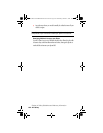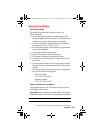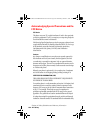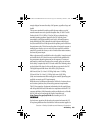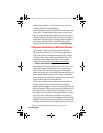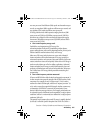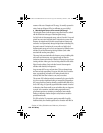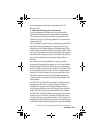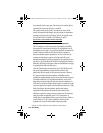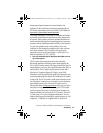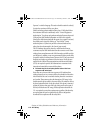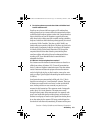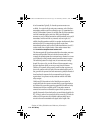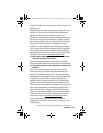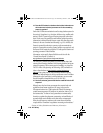
Section 4: Safety Guidelines and Warranty Information
110 4A: Safety
For products that only expose part of the body, such as wireless phones,
exposure limits in terms of SAR only are specified.
The exposure limits used by the FCC are expressed in terms of SAR,
electric and magnetic field strength, and power density for transmitters
operating at frequencies from 300 kHz to 100 GHz. The specific values
can be found in two FCC bulletins, OET Bulletins 56 and 65:
http://www.fcc.gov/oet/info/documents/bulletins/#56
;
http://www.fcc.gov/oet/info/documents/bulletins/#65
6. Why has the FCC adopted guidelines for RF exposure?
The FCC authorizes and licenses products, transmitters, and facilities
that generate RF and microwave radiation. It has jurisdiction over all
transmitting services in the U.S. except those specifically operated by the
Federal Government. While the FCC does not have the expertise to
determine radiation exposure guidelines on its own, it does have the
expertise and authority to recognize and adopt technically sound
standards promulgated by other expert agencies and organizations, and
has done so. (Our joint efforts with the FDA in developing this website is
illustrative of the kind of inter-agency efforts and consultation we engage
in regarding this health and safety issue.)
Under the National Environmental Policy Act of 1969 (NEPA), the FCC
has certain responsibilities to consider whether its actions will
significantly affect the quality of the human environment. Therefore,
FCC approval and licensing of transmitters and facilities must be
evaluated for significant impact on the environment. Human exposure to
RF radiation emitted by FCC-regulated transmitters is one of several
factors that must be considered in such environmental evaluations. In
1996, the FCC revised its guidelines for RF exposure as a result of a multi-
year proceeding and as required by the Telecommunications Act of 1996.
Radio and television broadcast stations, satellite-earth stations,
experimental radio stations and certain wireless communication
facilities are required to undergo routine evaluation for RF compliance
when they submit an application to the FCC for construction or
modification of a transmitting facility or renewal of a license. Failure to
comply with the FCC's RF exposure guidelines could lead to the
preparation of a formal Environmental Assessment, possible
Sprint FM OUG NO BROWSER CTIA-3a.book Page 110 Wednesday, October 9, 2002 1:42 PM



